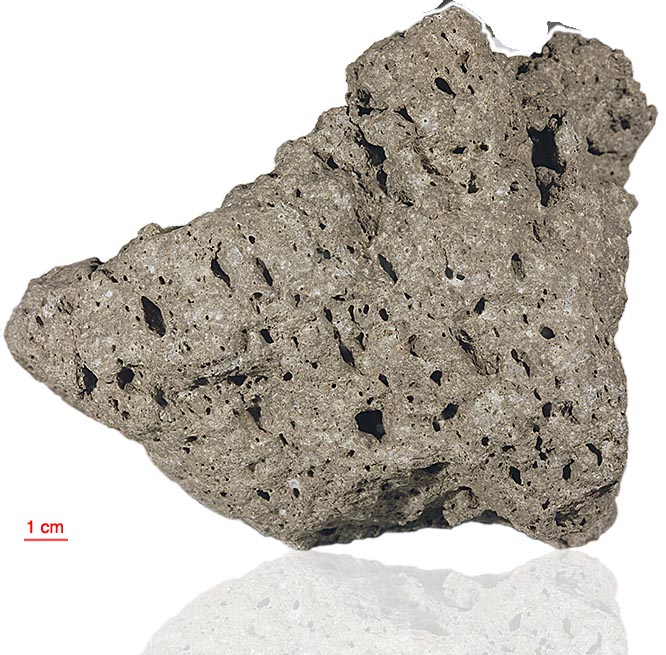
Fact sheet
76015 is a very vesicular, crystalline-matrix breccia with with <0.1 mm to 5 cm long irregular vesicles that compose about 20% of the rock by volume. Some of the vugs and cavities are several centimetres across.
The poikilitic matrix of 76015 is a continuous network of interlocking pigeonite oikocrysts enclosing
tabular plagioclase (10-50 microns) and rounded olivine chadocrysts. Small amounts of small augite grains (20 microns) are found both within the pigeonite and between grains. Poikilitic ilmenite and armalcolite grains up to 200 microns long occur in the matrix. The vugs host some interesting minerals, including troilite, metallic iron, apatite, cristobalite and dendritic metallic copper.
The sample weighed 2819 grams before processing and analysis and has been dated at 3.93±0.04 billion years (Ar/Ar).
Further details of this and other Apollo samples are here: http://curator.jsc.nasa.gov/lunar/
Apollo 17, the final manned landing mission, had two objectives: to obtain samples of ancient rocks from the lunar highlands and to look for evidence of younger volcanic activity on the valley floor.
This small Collection contains material deriving from both periods, including igneous rocks around 4.3 billion years old from the lunar highlands as well as younger volcanic samples dating from about 3.6 billion years ago.
Apollo 17 was launched on 7 December 1972.






